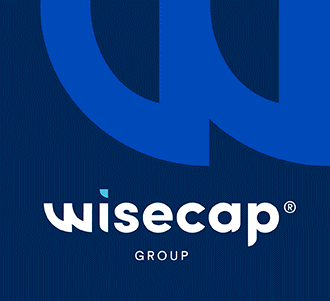

PET Preform Challenges
What’s next for PET preforms? - A discussion on sustainability, technology and market evolution
“What‘s next for PET Preforms?” - A burning question we discussed at the PETnology conference 2025 from both short-term and long-term perspectives.
At first glance, it seems like a simple question. But: How do global and regional factors influence sustainability, recycling concepts, energy, material flows, supply chains and consumer behavior?
In May 2025, at our 30th PETnology Europe conference in Rapperswil-Jona, Switzerland, five leading representatives of the global PET preform and packaging industry came together to discuss new challenges and opportunities.
This exchange between industry experts provided the audience with comprehensive insights into the future of PET preforms in a global context characterised by environmental regulations, evolving consumer behaviours and rapidly advancing technical requirements.
We are pleased to share these insights with you, our valued readers. Please find below a summary of the discussion, along with additional questions which the panellists have answered in writing. We hope you enjoy reading it.
Panellists:
- Michael Feltes Managing Director, IM Division | ALPLA ¡ Paulo Correia Chief Technology Officer | LOGOPLASTE
- Fahad Mohammed Riaz Group Vice Chairman | Mohammed Riaz & Partner LLC
- Otto Hofstetter CEO | Otto Hofstetter AG
- Darrel Smith VP of Engineering & Manufacturing Technology Western Container Corporation
The panellists’ business activities
Let’s start by finding out more about your companies and your activities in the PET preform sector.
Paulo: Logoplaste’s business model is unique compared to that of traditional preform manufacturers. Rather than selling preforms on the open market, we produce them for our own use. We supply large FMCG companies by designing, producing, and blow-moulding rigid packaging directly in or near their plants. We produce around 13 to 14 billion rigid packaging units annually, 55% of which are made from PET. Our PET preforms range in weight from 5 g to 260 g, and we design, produce approximately one billion preforms each year. We are vertically integrated, manufacturing preforms, blowing bottles, molding caps, and handling our own filling for our Sarooj Water brand. We focus on small formats, such as 250 ml, using ultra-lightweight preforms. Our 6.5-gram bottles with a 29/25 neck have already achieved significant reductions in plastic usage, and we are transitioning to a 25/22 neck to further enhance sustainability. Our region’s extreme climate, which can reach up to 50°C, presents unique challenges by putting stress on the stability of lightweight packaging.
Michael: ALPLA is a global packaging producer with 200 sites worldwide, 60 of which manufacture PET preforms. We have been involved with PET packaging since the 1980s and are known for our wide range of applications, including beverages, food, and personal and home care products. Although we don’t publicly disclose our total preform output, the size of our global footprint speaks for itself.
Otto: Our company was founded 70 years ago and has remained family-owned ever since. Tool and mould making is our speciality. We develop, design and maintain injection molding tools for producing PET preforms, thin-walled packaging, medical applications and more. To give you some figures, we produce around 18,000 cores per year for around 5,000 cavities. Our tools have an excellent reputation worldwide.
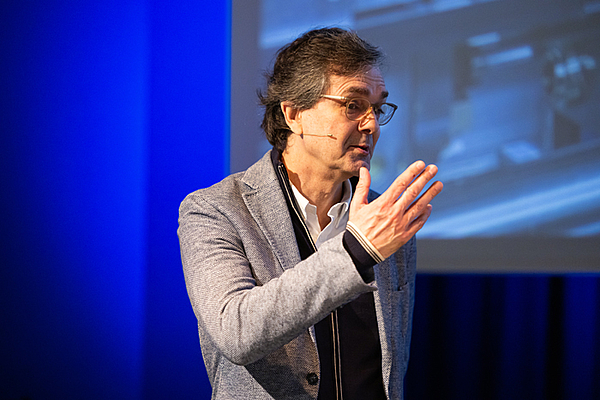
Driving forces in PET packaging
Let’s discuss the dynamics of the packaging market. What key driving forces do you observe in your respective regions?
Darrel: At Western Container, we produce in-house for Coca-Cola. Our market is defined primarily by Atlanta. Coca-Cola’s “World Without Waste” initiative sets the tone. However, let’s be realistic. I think we’ve lost sight of the fact that the waste collection infrastructure in the US is far worse than in Europe. However, it’s important to remember that reducing waste contributes to the “zero waste” movement. That’s why it’s important to keep the weight down. We’ve done a good job with PET consumption so far. We have extensive experience with rPET, and our engineers are excellent. However, we’ve found that the problem with rPET isn’t in the preform; it’s in the bottle. Although we’ve successfully used 100% rPET in our injection molding machines, we’re still struggling with blow molding. Consumers just need to understand where we stand. We need to stop portraying plastic bottles as the scapegoat for all micro plastics and carbon footprint. The plastic bottle is a superior option against other packaging.
Paulo: From our perspective, the primary stressors are regulatory and legislative. In Europe, regulations are evolving faster than the industry can adapt. Extended Producer Responsibility (EPR), Deposit Return Systems (DRS), and the Packaging and Packaging Waste Regulation (PPWR) are game changers. To remain compliant, we must continuously update our designs, manufacturing processes, and supply chain partnerships. Meanwhile, global brands continue to set ambitious sustainability goals that are sometimes disconnected from regional material realities.
Michael: I completely agree. Although there is a global conversation about sustainability, environmental goals are often offset by cost pressures when it comes to practical business decisions. Lightweighting and reducing the CO2 footprint are consistent trends. We believe in closing the loop. Sustainability is a central pillar of our strategy. In 2024 alone, we recycled approximately 340,000 tons of PET back into food-grade material, achieving major milestones. However, this process requires the proper collection and sorting infrastructure. Our goal for this year is to recycle 380,000 tons or more. We operate 14 recycling plants globally, many of which focus on PET, though some process HDPE. We consider recyclability and the transition to a circular economy to be critical, particularly in high-volume segments.
Fahad: Our situation is different. We are in an emerging market where the PET recycling infrastructure is still in its infancy. However, sustainability is a core value of our government’s Vision 2040, and we’re doing our part through aggressive lightweighting. In the last three years, we’ve reduced our plastic usage by about 30%. We hope to lead the region in sustainable packaging by adopting lightweight neck finishes and efficient machinery. However, the adoption of rPET remains limited due to a lack of processing facilities.
_______________
''We believe in closing the loop. Sustainability is a central pillar of our strategy. In 2024 alone, we recycled approximately 340,000 tons of PET back into food-grade material, achieving major milestones.'' - Michael Feltes.
_______________
Challenges for Molds
Otto, how do these trends affect you as a mold manufacturer?
Otto: Our business follows the direction of the market. As bottles become lighter and smaller, the requirements for preform molds become more demanding. The tolerance for defects is shrinking. We also face a potential threat. If alternative packaging, such as flexible pouches, gains traction in water packaging, our segment could decline. That’s why we closely monitor emerging packaging formats and emphasize the sustainability benefits of PET, especially in regions where clean water is scarce and PET bottles are essential. We are doing everything we can to ensure that small PET bottles remain an attractive, sustainable packaging solution for consumers.
The common goals are product protection and sustainability, all in light of climate change. All the issues you mentioned are interrelated and put pressure on our industry. Are there differences between different regions of the world?
Michael: I think product protection is really important these days. People are paying more attention to their consumption of water and other beverages. Therefore, growth will likely be driven mainly by concerns about consuming products that aren’t adequately protected. The more we move into emerging markets, the more this issue arises. Tampering with beverage packaging tends to affect the closure rather than the bottle itself. We believe these challenges will increase, especially in emerging markets such as the Philippines and Indonesia, which have large populations but are not yet highly developed. We have recognized the need to focus on safe packaging for basic items like drinking water and other beverages.
Paulo: I think the pressure is essentially the same everywhere. Europe is currently leading the way, but other regions are following a similar approach. In our case, we probably see even fewer differences because we work with companies in the fast-moving consumer goods sector. These companies naturally have global goals, so we usually have global specifications and targets for using recycled ingredients. From this perspective, harmonization is probably greater than in other markets.
Fahad: Climatic conditions indeed play an important role. Temperatures in Oman can reach 50 degrees Celsius. Therefore, manufacturing a bottle that is both lightweight and stable is a particular challenge for us. Regulations prohibit filling bottles containing still water with nitrogen. However, we are continuously working on improvements. I believe the next size reduction will be significant in terms of sustainability.
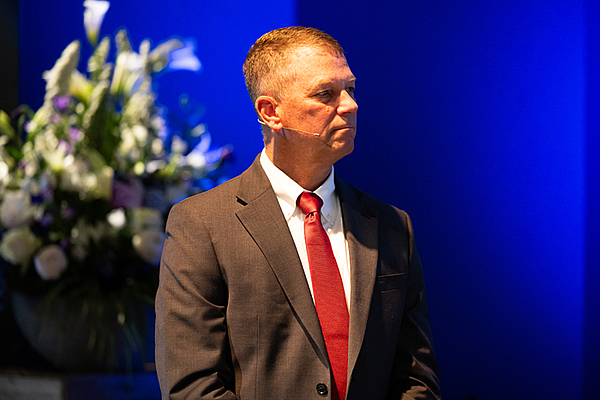
Considering these issues and market trends, how will they affect the short- and long-term strategies of the PET packaging industry? Do we only need high-quality products produced with less energy? Should we implement more advocacy initiatives and partnerships to overcome the discussed problems?
Otto: Yes, we are under pressure and must work together as an industry to address sustainability issues, such as our carbon footprint. We are also seeing increasing pressure regarding environmental, social, and governance (ESG) issues. In this context, I would like to highlight another aspect. Nowadays, if you want to invest but lack the necessary funds, you go to the bank and inquire about the terms and conditions. While ESG requirements are not yet legally required, given the current political climate, I believe they will be mandatory in a few years. If your company does not comply, it will receive a poor rating. Therefore, this is crucial for both the company and our PET packaging industry.
Darrel: That’s an important thing to talk about. Energy reduction means reducing the CO2 footprint and reducing costs. It’s one of our top five costs to make a bottle. And again, our whole goal is to drive the cost down for the Coca-Cola system. We’re continue to get smarter in how we operate or company.
_______________
''Our business follows the direction of the market. As bottles become lighter and smaller, the requirements for preform molds become more demanding. The tolerance for defects is shrinking.'' - Otto Hofstetter.
_______________
Let’s discuss technology. What are the biggest challenges you face in daily operations?
Darrel: The skills gap. In the United States, there are too many engineers with four-year degrees. What we need are two-year technology degree programs. From a manpower standpoint, that’s where we’re struggling. We’ve introduced entry level AI programs, and all of our maintenance manuals are now on an AI platform. Keep in mind that the young people you’re hiring have had a mainframe computer in their pocket for the last 15 or 20 years. They’re used to having that computing power in their pockets. Therefore, we’re trying to change our technology and maintenance programs to align with our current hires. Otherwise, we won’t be able to recruit talented young people. That’s the direction in which we’re trying to take our technology. We trust several suppliers—or partners, as I should say—who have contributed to our success. We can use them to continue providing us with technology.
Paulo: To survive in our business, it is crucial to understand the complexity of today’s landscape. It’s not just about the preforms; it’s also about the recycling stream and the complexity of the legislation. It’s about stable blowing processes with rPET and quality, and all of these factors must be integrated. This will enable us to reach the next level. Looking at legislation, I would like to provide a brief overview. I remember that a few years ago we exported PET to China. Now, due to current PET recycling targets, we import it. The situation has completely changed. One point is that everyone is talking about 100% rPET. I have to say that I have difficulty with this. We shouldn’t be talking about 100% rPET if the market is not able to supply large quantities of it. Unfortunately, we currently have two different markets that are not aligned with each other. On the one hand, there are marketingoriented companies that develop for consumers and make strong commitments. But there is the real world, where it will be difficult to deliver even 25 to 30 percent rPET. If we look at the specifications and examine the technical data sheets in detail, it becomes clear that color deviations and impurities in rPET obviously cause difficulties in the process. If I had to highlight and question something, those would probably be the areas I would focus on: we need to develop flexible, intelligent and responsive systems.
Fahad: The most important thing for us is that we are very thankful for all the companies we work with: Netstal, Otto Hofstetter and IMD, to name a few. Ultimately, when we work on lightweighting, it’s about ensuring the stability of the bottle. We use preforms with a very low weight, so it is crucial that we ensure the bottles are stable. This process is very challenging, especially when producing 100,000 bottles per hour. It’s very complex. Acquiring technological expertise in Oman is challenging. We are probably going to set up a small training center to develop this expertise internally because we are not aware of many developments in this part of the world. We are also hiring young students to work with us. We expect growth in the next phase. We would like to thank all the partners who have supported us.
Michael: The progress we’ve made over the decades is impressive. Preform weights have dropped from 20 grams to under 8 grams. However, further progress requires a systems approach—not just new machines or molds, but also alignment across design, collection, legislation, and consumer education. That’s why we see collaboration as essential.
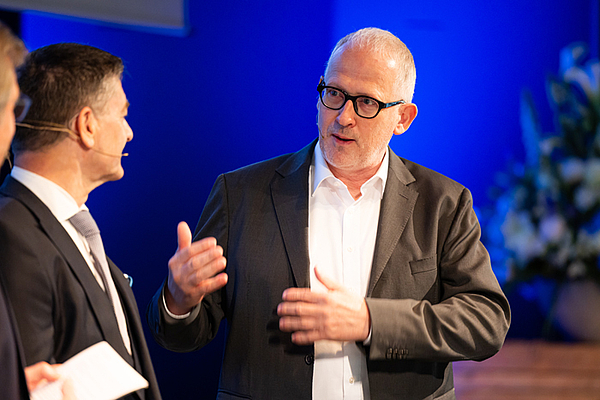
How will market developments impact your short- and long-term strategic direction?
Michael: We view the growing complexity of regulations as a significant catalyst for change. Mandatory minimum percentages of recycled content, particularly in Europe, are forcing a rethink in product design, procurement strategies, and recycling investments. To meet this demand, ALPLA is doubling its efforts in food-grade recycling. However, maintaining purity in the recycling stream remains a challenge, even in mature markets, due to imports of low-quality flakes. By diverting PET bales to non-bottle applications such as textiles, we lose bottle-grade material. In the short term, we are focusing on scaling up high-quality recycling. In the long term, our goal is to establish closedloop systems.
Paulo: One risk we face is that sustainability initiatives are often designed without considering industrial realities. There is a lack of coordination between legislation and what the market can deliver. For example, brands commit to high rPET quotas, but supply chains cannot always meet those volumes or specifications. For this reason, I advocate for a more realistic approach: we must align design specifications with material availability. Additionally, regulatory pressure on food-grade HDPE could lead to a shift toward PET in new applications. This could be a strategic opportunity, but only if recycling systems for difficult-to-recycle formats also evolve. Chemical recycling must be part of the long-term solution.
Darrel: The US recycling rate of just under 35% is one thing that keeps me up at night. This is not enough to sustain a domestic rPET supply chain. California is pushing for a regulation that would require us to rethink our neck finish and tooling strategy: tethered closures. From a cost perspective, we’re focused on energy optimization. We’re reevaluating machine tonnage to strike the right balance between flexibility and efficiency.
Fahad: We’re investing in increased capacity and advanced technology to stay ahead. Our next facility will use 25/22 neck finishes, requiring new tooling and blowing parameters. Since there is no rPET processing in our country, we depend on imports, which limits our flexibility. That’s why we focus so heavily on lightweighting. At our scale, even saving a gram means massive reductions in material and costs.
_______________
''To survive in our business, it is crucial to understand the complexity of today’s landscape. It’s not just about the preforms; it’s also about the recycling stream and the complexity of the legislation.'' - Paulo Correia.
_______________

How are you responding to the increasing expectations for digitalization and AI in production?
Darrel: For us, AI isn’t about eliminating jobs. It’s about preserving expertise. We’re digitizing all maintenance manuals and operational logs. AI helps us identify patterns, such as recurring pressure deviations, and directs technicians toward the correct solution. Today’s workforce expects this level of integration. AR-based training and support are becoming the norm.
Paulo: Eventually, AI will give us real-time control over our entire system, from preform injection to blowing, filling, and quality inspection. We’re not quite there yet, but we’re developing closedloop systems that automatically adjust when they detect a deviation. This minimizes scrap and human dependency, which is especially important where skilled labor is scarce.
Micheal: One area in which AI will be transformative is bottle sorting. Full-body sleeves on PET bottles, for instance, are difficult to detect in sorting streams. However, AI-enabled vision systems can identify these bottles and improve sorting accuracy, thereby protecting the quality of rPET. Digital tools also facilitate traceability, which will become increasingly important as legislation tightens.
Fahad: We’re in the early stages of our digital transformation, but we recognize the need. For example, we’re exploring automated feedback systems that adjust blowing parameters based on real-time weight and pressure data. These systems help us maintain consistency despite fluctuations in raw materials or machine conditions.

In light of these technological, regulatory, and sustainability pressures, do you foresee any significant threats to the current preform business model?
Otto: Yes, there are two major risks: consolidation and substitution. On the one hand, high-volume producers are investing in large, integrated systems with high-cavitation tooling. On the other hand, niche players seek flexibility and responsiveness. If packaging trends shift radically—for instance, toward pouches or reusable formats—demand for preforms could decrease. However, PET remains unmatched in its recyclability and properties, especially for food and beverages.
Michael: In my view, the bigger threat is perception. We are under mounting pressure from NGOs, the media, and regulators. Often, the narrative overlooks how much progress PET has made. A poorly informed public can drive policies that are not grounded in lifecycle analysis. We must speak up collectively as an industry.
Darrel: Agreed. I would argue that aluminum and glass have much higher CO2 footprints than PET if we measure them fairly. Yet, they’re often viewed more favorably. That’s why communication is key. We also face internal pressures. If we don’t address workforce challenges, we may lack the human capital to run tomorrow’s factories.
Paulo: Future winners will be defined by flexibility, speed, and circularity. Those who see themselves only as “preform makers” may not survive. We must evolve into solution providers, offering integrated packaging systems, data insights, and sustainability consulting services.

To conclude, what gives you confidence that the PET preform industry will thrive in the years ahead?
Michael: PET’s combination of performance, safety, and recyclability is unmatched. With smart design and responsible recycling, it will remain the material of choice in many segments. But we must act—invest, educate, and collaborate.
Paulo: I believe in the adaptability of our industry. We’ve overcome material bans and price volatility, and now we’re facing demands for a circular economy. By staying close to our customers and investing in the right capabilities, we’ll continue to lead.
Fahad: Innovation. Thanks to lightweighting, new neck finishes, and local integration, we have the agility to better serve our markets. Although we are a small region, we think big.
Fahad: I’m optimistic because we’ve got the right people and partners. With better data, smarter systems, and stronger communication, we’ll continue to drive progress in PET.
_______________
''Thanks to lightweighting, new neck finishes, and local integration, we have the agility to better serve our markets.'' - Fahad Mohammed Riaz.
_______________
Conclusion: Reinventing Resilience
Although the PET preform industry is under pressure, the future is full of opportunities if the right decisions are made. The message from this discussion is clear: it’s not just about surviving the next regulation or customer demand; it’s about shaping a future in which PET remains a cornerstone of sustainable global packaging. This panel discussion also demonstrates that the PET preform industry is neither complacent nor reactive. It is actively working on a new paradigm that combines sound technical expertise with strategic foresight.
The comPETence center provides your organisation with a dynamic, cost effective way to promote your products and services.
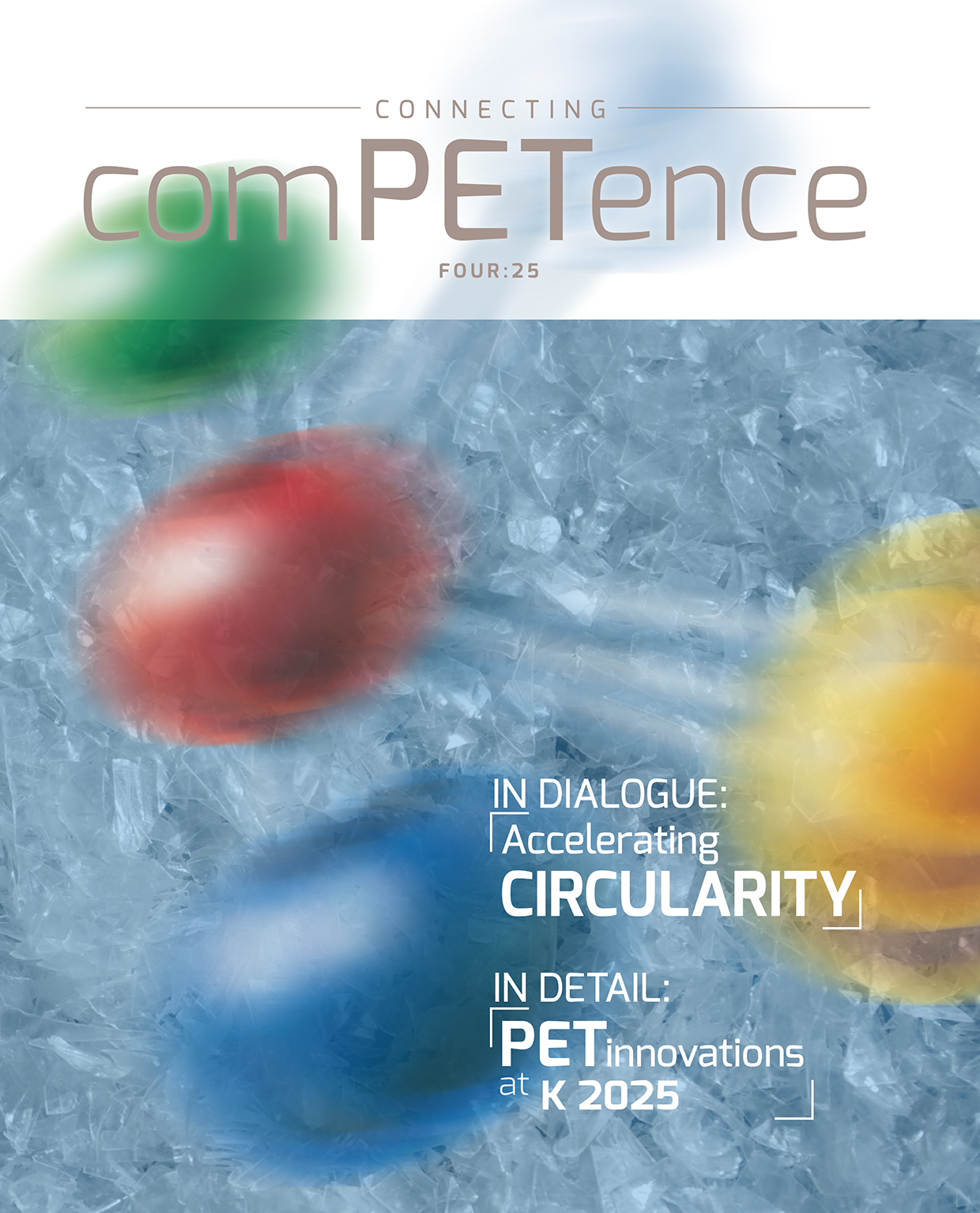
magazine
Find our premium articles, interviews, reports and more
in 3 issues in 2025.


